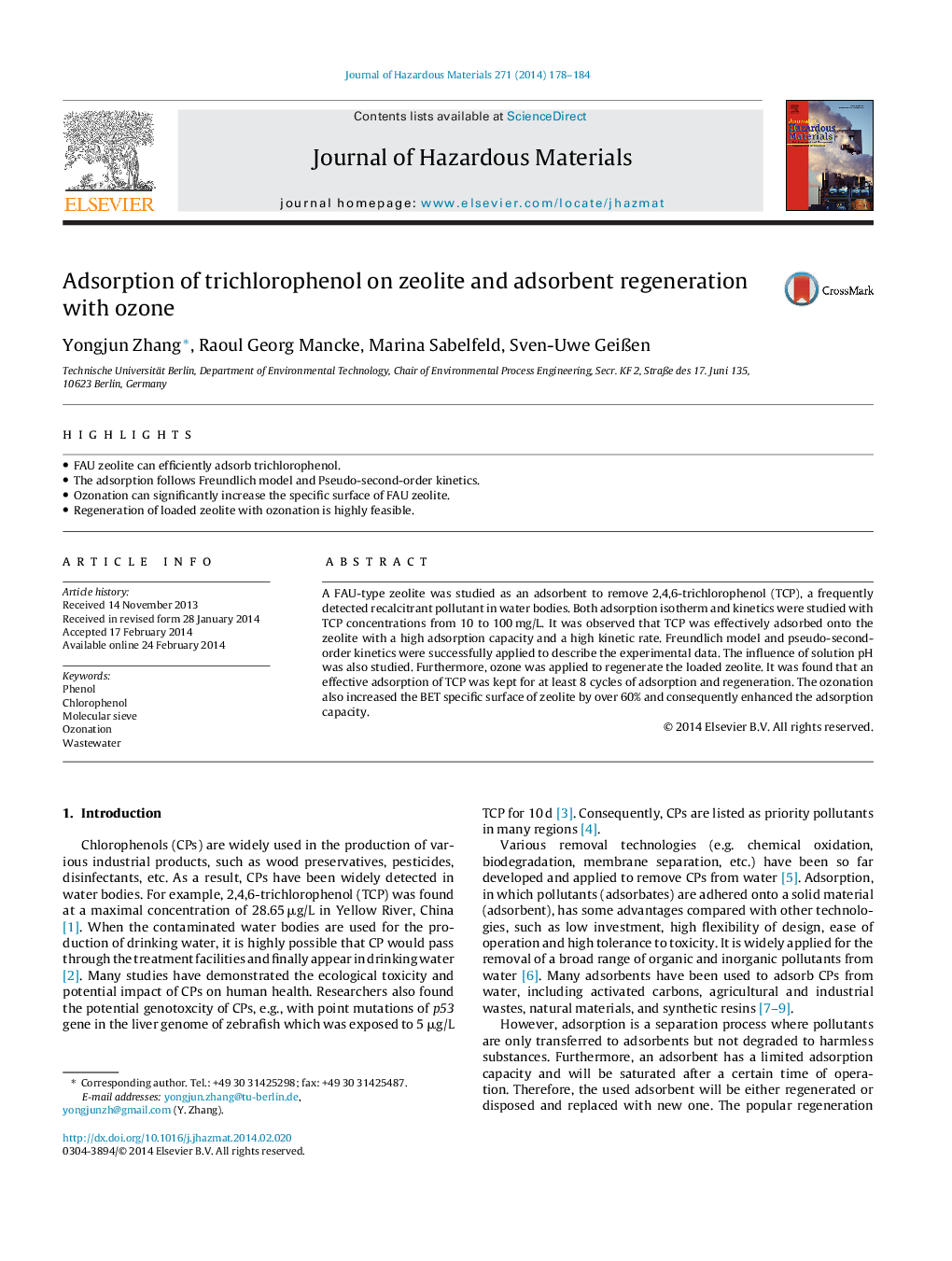| Article ID | Journal | Published Year | Pages | File Type |
|---|---|---|---|---|
| 6971665 | Journal of Hazardous Materials | 2014 | 7 Pages |
Abstract
A FAU-type zeolite was studied as an adsorbent to remove 2,4,6-trichlorophenol (TCP), a frequently detected recalcitrant pollutant in water bodies. Both adsorption isotherm and kinetics were studied with TCP concentrations from 10 to 100Â mg/L. It was observed that TCP was effectively adsorbed onto the zeolite with a high adsorption capacity and a high kinetic rate. Freundlich model and pseudo-second-order kinetics were successfully applied to describe the experimental data. The influence of solution pH was also studied. Furthermore, ozone was applied to regenerate the loaded zeolite. It was found that an effective adsorption of TCP was kept for at least 8 cycles of adsorption and regeneration. The ozonation also increased the BET specific surface of zeolite by over 60% and consequently enhanced the adsorption capacity.
Related Topics
Physical Sciences and Engineering
Chemical Engineering
Chemical Health and Safety
Authors
Yongjun Zhang, Raoul Georg Mancke, Marina Sabelfeld, Sven-Uwe GeiÃen,
